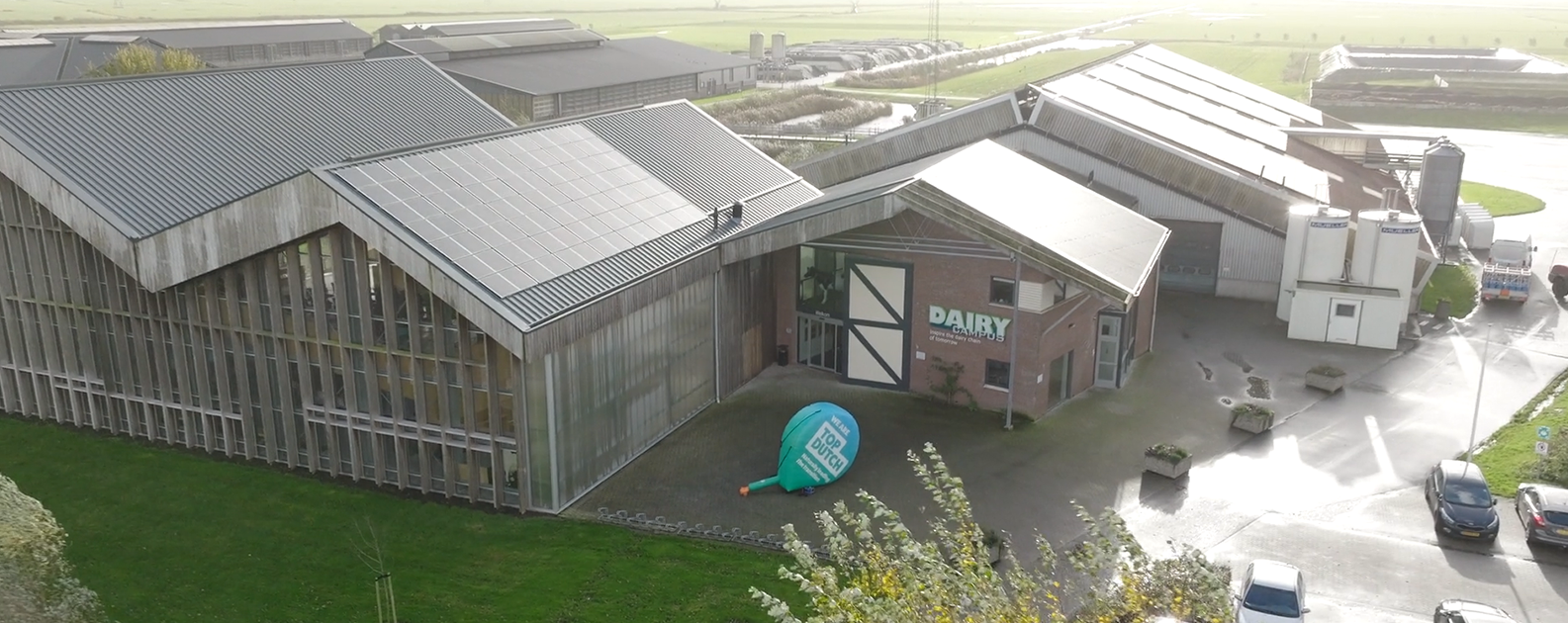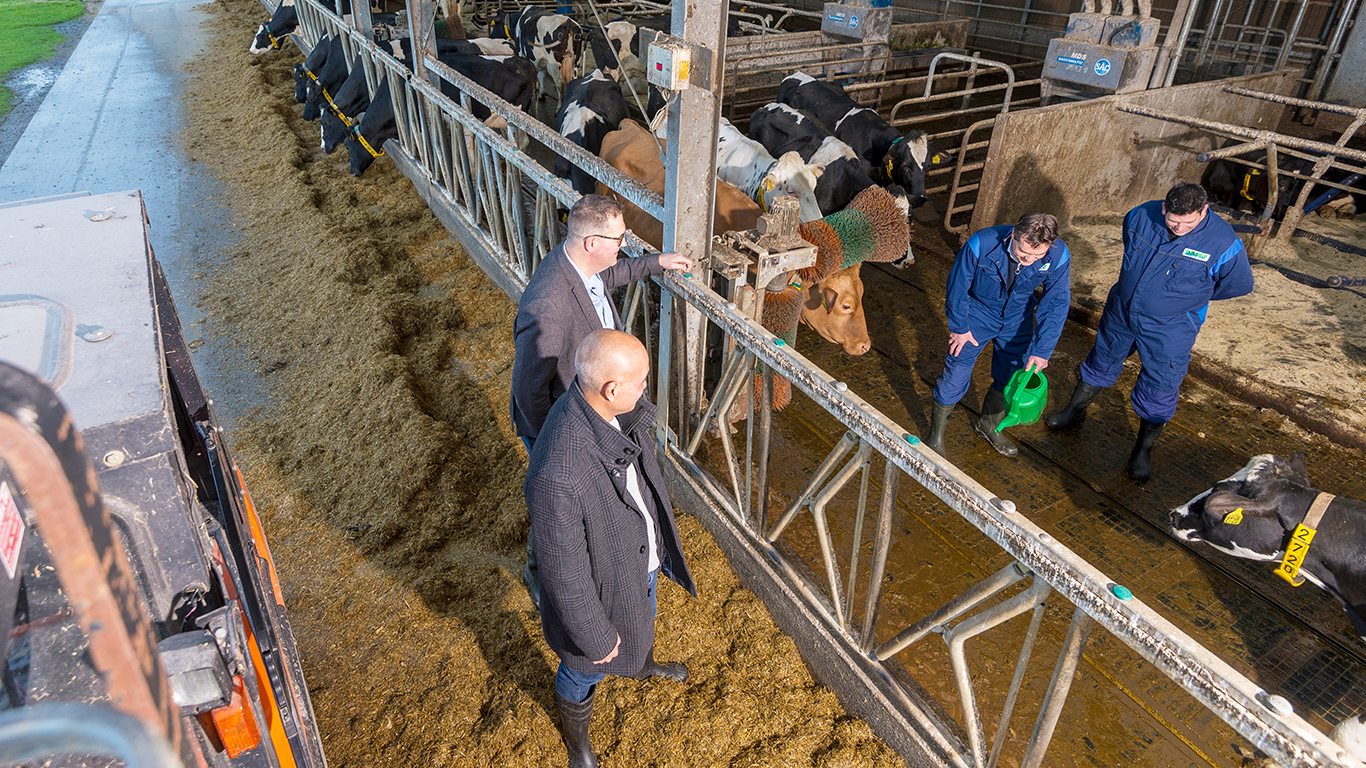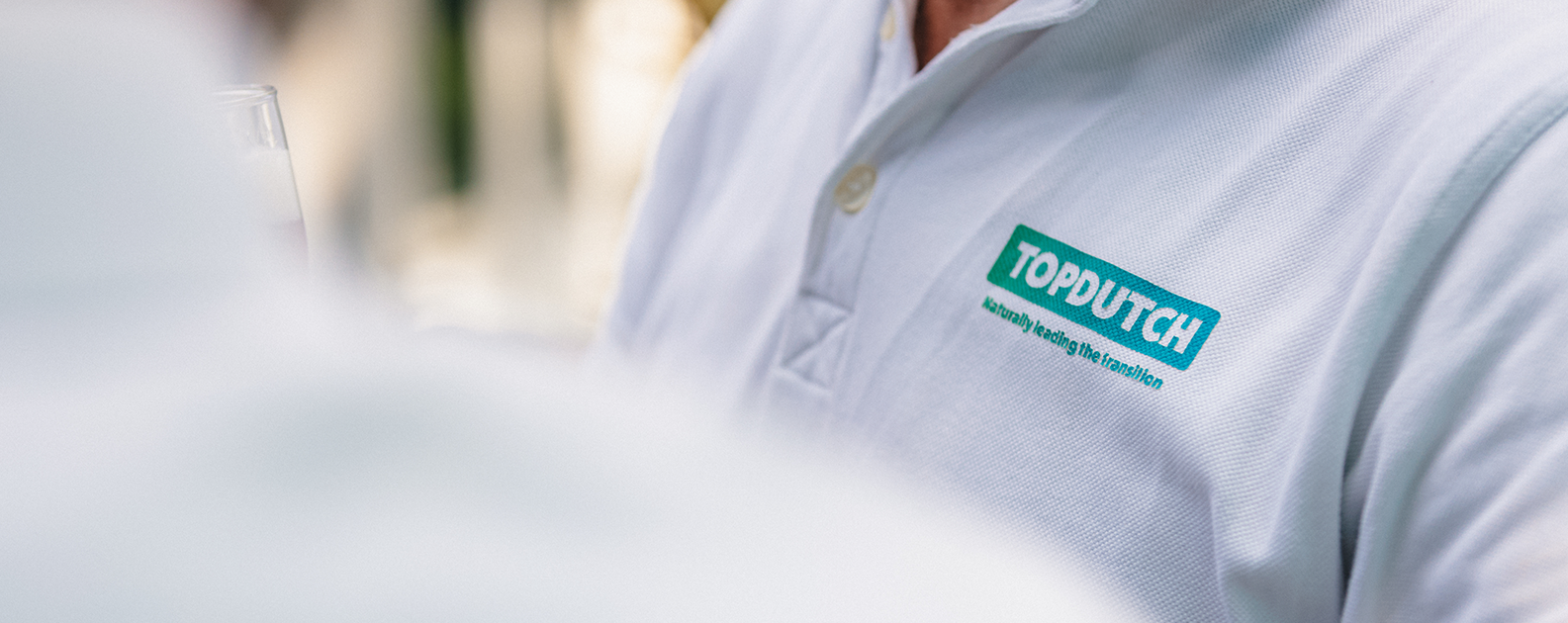Farmers and scientists unite to solve the nitrogen crisis
Finding solutions for sustainable transitions can be messy business. In FarMin’s case it involves cow excrement and salt. But it also takes a lot of teamwork. In the TopDutch region, a triple-helix team of agri-entrepreneurs, researchers and business developers are on a mission to find a cure for the nitrogen crisis.

If you want a glimpse into the future consequences of failing to make the planet as important as profit, the nitrogen crisis is a good place to start. After the pain of the second world war, the Netherlands declared ‘never again’ to hunger, and focussed our ambition, entrepreneurialism and strategic thinking into driving up our agricultural yield. It worked. Now, despite being a small and densely populated country, we’re the second largest exporter of food – only coming in behind the USA.
But, until the last decade, the reality of the damage that rising nitrogen emissions, largely caused by agriculture, has on the environment tended to be a secondary consideration in policy making. When ammonia – released into the air by animal manure – mixes with the nitrogen oxides emitted by internal combustion engines in cars, planes and other industrial processes, it can cause acid rain, loss of biodiversity and groundwater pollution. In 2019, the Council of State ruled that the existing nitrogen reduction strategy wasn’t enough to comply with EU law, and building permit applications had to be put on ice. In 2021, the government set out a radical but necessary target: Reduce emissions by 50% by 2030.
To achieve these ambitious targets, the Netherlands now has to apply the vision and determination it used to become a leading agrifood exporter to leading the transition. It won’t take one hyperdigital solution to get there, but rather the collaboration of sound science, farmers’ expert knowledge, and subsidies to find a portfolio of solutions and generate healthy growth for the agrifood industry.
Better yields and fewer emissions
An example of such triple helix collaboration can be found in the TopDutch region, led by farmer-turned-entrepreneur Andries Huisman. Years ago, he founded FarMin after realizing that adding magnesium salt to manure enriches the soil, making crops like grains and grasses grow better. “My mission is to get healthy food from the land. In this case: we use manure to keep crop growth in balance,” Huisman lays out. But it was another discovery a while later that generated a flurry of intense research and development.
Andries Huisman discovered the extremely positive side effect of his manure improver by sticking his nose into a cow barn. It smelled a lot less powerful than elsewhere, where his salt had not yet been mixed with the manure. Could it be? Better yields and fewer emissions? It makes sense. Magnesium molecules ‘trap’ ammonia molecules, that’s textbook chemistry. Together they form the crystal struvite. Such a crystal is less volatile and remains in the soil. The magnesium molecules important for crops remain available longer. And it saves quite a lot of emissions.
The first rough tests showed that with the right ratio of manure to salt, an emission reduction of no less than forty percent could be achieved. This called for more testing. It was then that FarMin arrived at Dairy Campus, the TopDutch-based location of the renowned agricultural school Wageningen University & Research. Here, there are two identical test barns, with the same conditions and similar cows. By 'enriching' the manure in one barn with magnesium salt and not in the other, the benefits can be measured exactly.
We brought together the entrepreneur, the research center, and also funding to help farmers implement this technology
Alex Berhitu, Business Development Team Leader NOM
Alex Berhitu, Business Development Team Leader at the regional development agency for the Northern Netherlands (NOM) explains the process: “Although not originally intended, the FarMin approach has caught our attention towards a very promising side effect: the binding of ammonia, thus reducing nitrogen emissions [which is] currently the biggest issue in the Netherlands”. In order to speed up innovation, the TopDutch state plays a supportive role for scientists and entrepreneurs alike. “From the start, we have taken on a coordinating role,” continues Berhitu. “We brought together the entrepreneur - with his ideas - the research center, and also regional and national funding to help farmers implement this technology”.
The next step
Huisman worked with several parties to build an automated dosing system for its salt, so that quantities can easily be adjusted according to conditions. As the testing stages advanced, they realized that ‘real life’ usage produces vastly different results than in the lab, thanks to the all the extra variables. Initially, the salt was mixed directly into the manure pit, which yielded remarkably little result.

Again, this called for the technical expertise of the researchers at the Dairy Campus. The team of scientists and entrepreneurs made adjustments, instead misting the magnesium salt over fresh manure like a thin film layer. The results skyrocketed.
To date, the R&D process is still ongoing. But the FarMin team are optimistic that this can be a powerful tool in the whole toolbox of solutions that are needed to transition the agrifood system. “The reduction in barn emissions is substantial. We expect the same on the land. Now we need to continue experimenting on the frequency with which magnesium is sprayed on manure and also with lowering the dosage,” said Hendrik Jan van Dooren, Biosystems Engineering Researcher at Wageningen University & Research.
Triple helix innovation
Andries Huisman is sure that his business location in the Northern Netherlands has supported his entrepreneurial journey. “In the TopDutch region, I collaborate with universities, businesses and suppliers to reach our goals,” he explained.
Within the TopDutch region, we're able to lead any transition
Alex Berhitu, Business Development Team Leader NOM
The collaborative culture of the region runs deep, and is not limited to solving the nitrogen crisis. The North’s economic policy – applying our natural resources and regional entrepreneurial spirit to sustainable economic transitions - is summed up by the tagline ‘naturally leading the transition’. “This was just a typical example in the agrifood sector," concludes Alex Berhitu. “Within the TopDutch region, we have many [such] ecosystems, and we are able to lead any transition”.
Should your TopDutch company be showcased here?
Put your company on the map!Call me back
Please feel free to fill out the “Call Me Back” form below, and we’ll be delighted to get in touch with you at your convenience.


